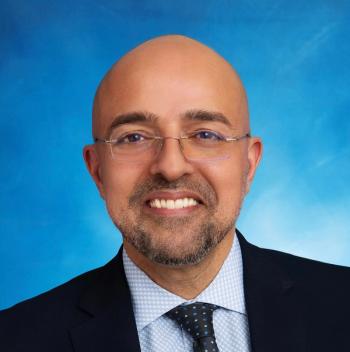
Surgeon Urges Use of New Tech to Reduce Excess Opioid Supply: "We cannot sit idly by."
Respected surgeon pens plea in Annals of Surgery urging increased use of electronic prescribing platforms to stem the tide of opiate misuse.
"We cannot sit idly by."
Atul Gawande, MD, a prolific author, as well as a respected surgeon and professor, has penned
If clinicians utilize existing, available to technology to send prescriptions digitally, he argues they could write initial prescriptions for a smaller quantity of pills while confident they would be able to remotely order more if needed. Gawande believes that surgeons currently tend to overprescribe opioid pain relievers, knowing that refills without a written prescription are difficult to obtain and could leave patients stranded in pain if the supply runs out.
Additionally, Gawande explains that electronic prescribing, or e-prescribing, would help prevent duplicate prescriptions, reduce dosing errors, integrate with prescription drug monitoring databases, and improve patients’ experiences after surgery.
He relays the story of one of his patients who was accidently discharged without a prescription for pain medication, so that by the time he returned home “he was miserable with pain.” A family member had to drive back to the hospital in another state to pick up a written prescription, since the local pharmacy would not acknowledge a prescription given remotely.
Gawande questions why the e-prescribing of controlled substances like opioids, despite being allowed legally, has been adopted in practices representing only 8% of all physicians. Technological capabilities are not the obstacle, as more than 90% of physicians use electronic health records and 81% of pharmacies can receive opioid prescriptions over the internet. Neither is feasibility, as demonstrated in New York, which saw a high rate of physician uptake even before a requirement last year made the use of electronic opioid prescriptions mandatory.
He acknowledges that e-prescribing is far from the only tactic clinicians must use to responsibly treat pain. Current guidelines advise surgeons to prescribe nonopioid alternatives whenever possible, utilize prescription monitoring program databases, clearly instruct patients on how to dispose of unused pills, counsel patients to focus on functioning through pain instead of eliminating it entirely, and prescribe the minimum quantity of painkillers necessary.
The final suggestion is “the trickiest part” for Gawande, as the necessary amount of medication is hard to define and varies by patient.
Gawande concluded the piece with a call to action, writing that "We surgeons turn out to be suppliers of the excess prescription opiates fueling addiction and death by overdose,” he wrote. “We have to change that. And we now know how we can.”
A version of this story originally appears in the







































